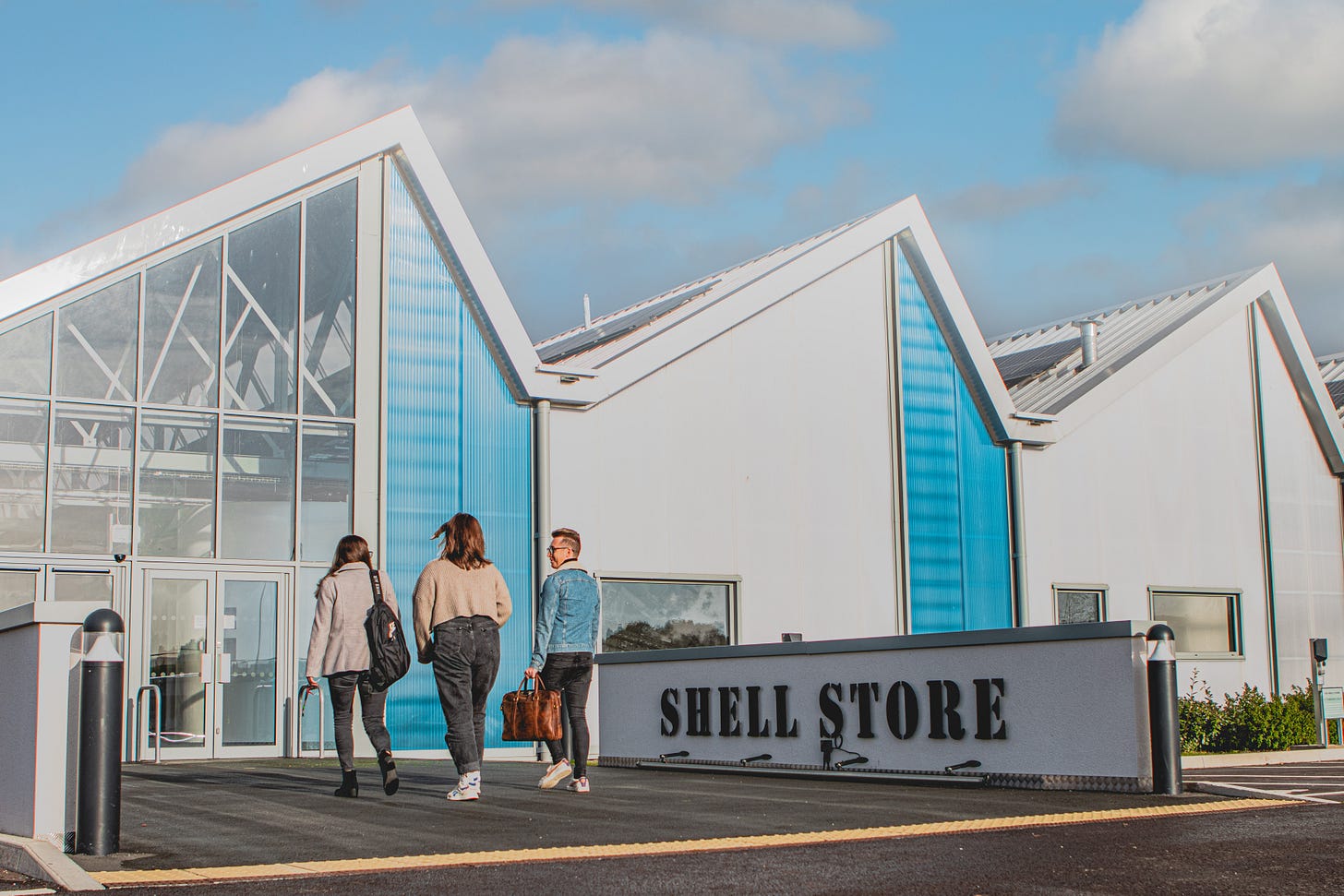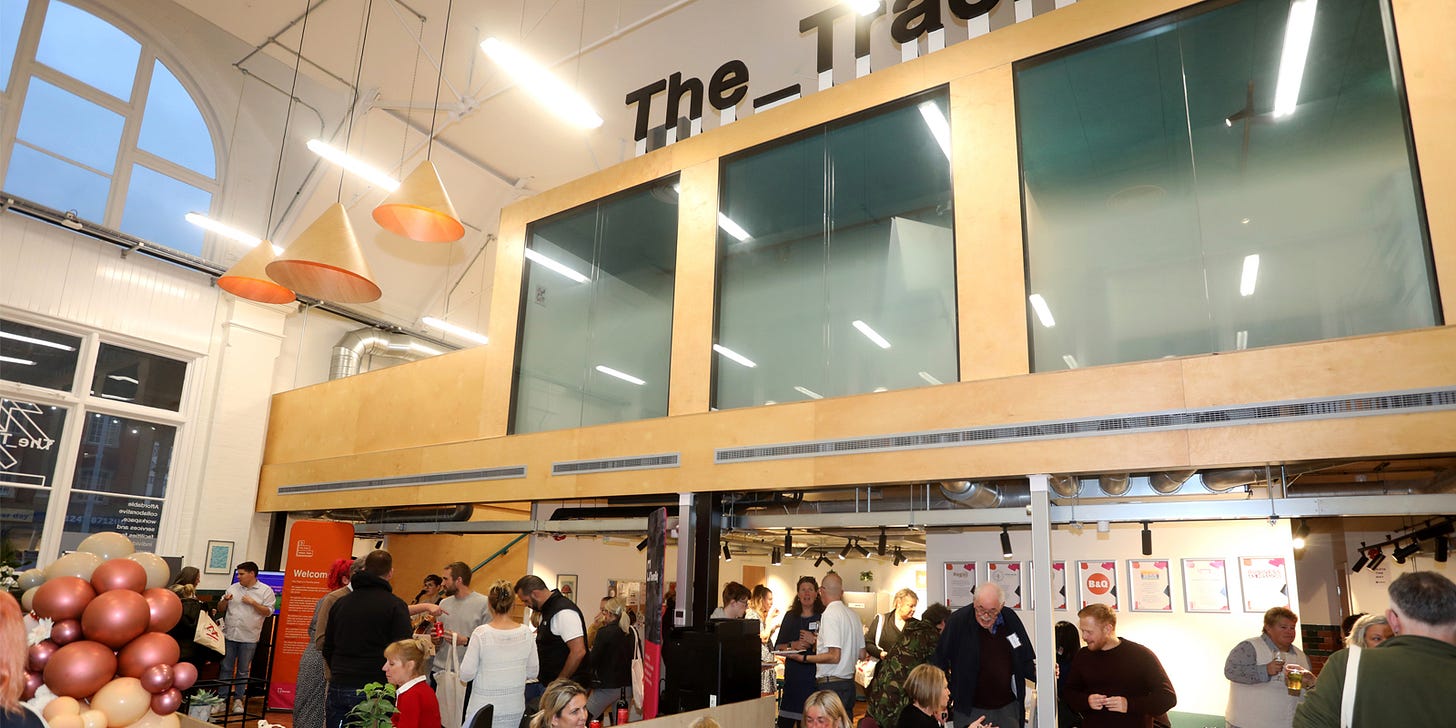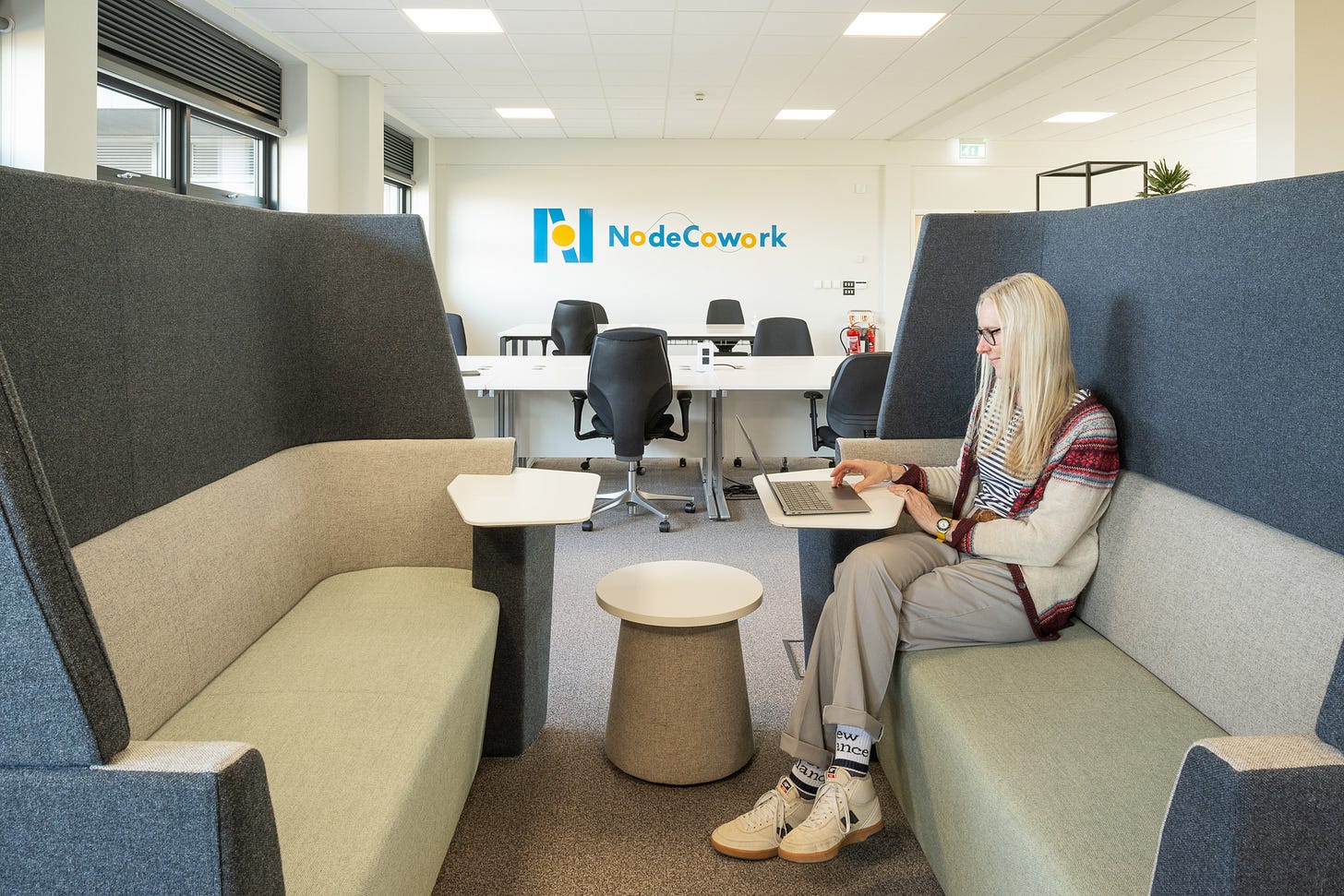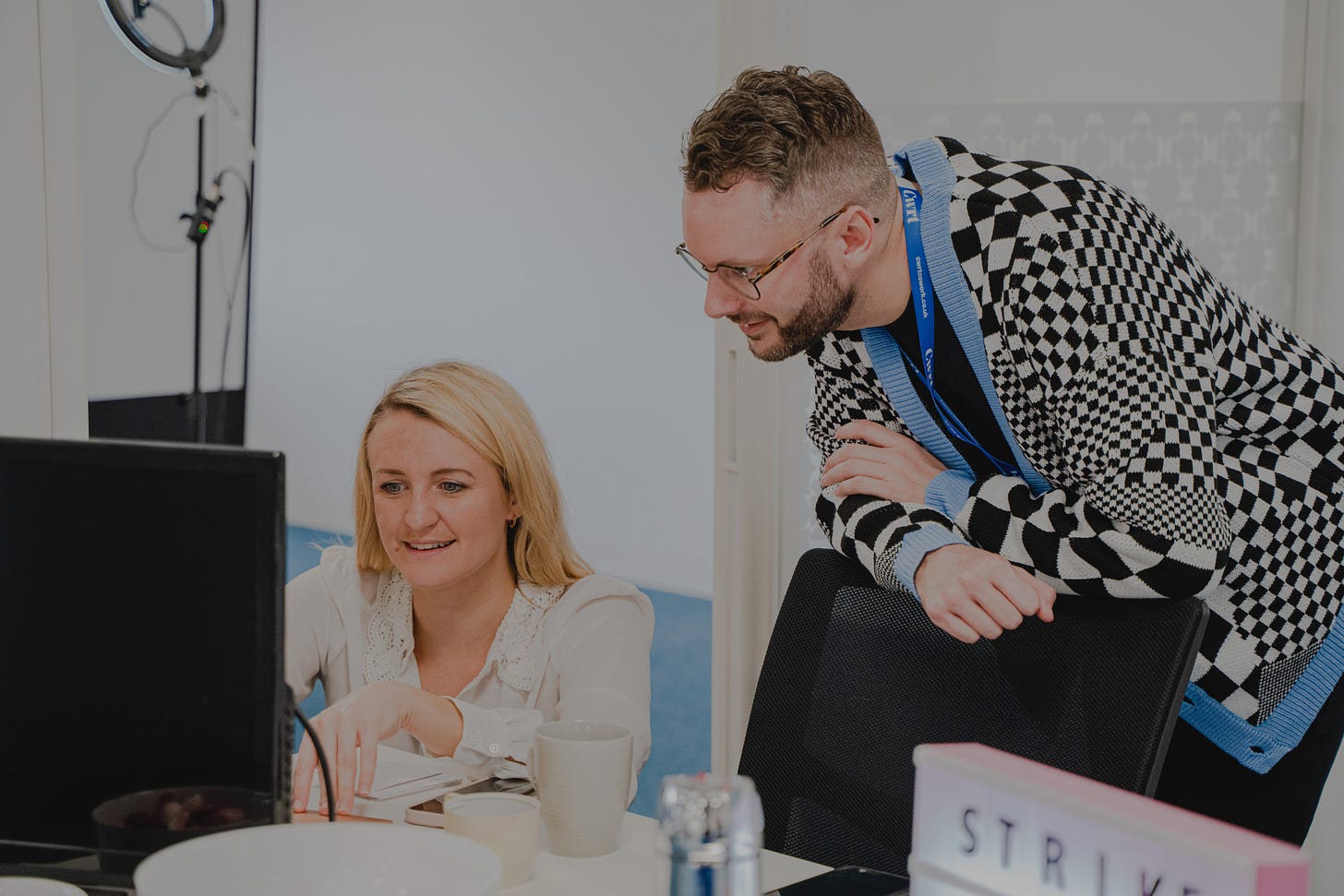Get Touring
In the world of coworking the art of doing good tours is directly related to how successful the space can become.
This article is quite focused on the world of coworking, but there’s relevance for other industries too - I’ll let you be the judge of that, let me know what you think!
My view is that you should be doing 10+ tours a week. These aren’t all for potential customers (members), but could be partners, stakeholders, supporters, or just people who are nosey.
Our theory of change at TownSq is based entirely on getting this right.
It’s a long game, and as a result I think it’s important to not have hard conversion rates. If you’re organising tours with the sole intent of converting visitors into members then - in my opinion - you’re missing the point and missing a trick.
I recognise there are others who will have strong and contrary views on that point.
You want people to come into the space and really get a good feeling of what it is about, and what it stands for. If your main focus of every line and question is to drive people closer to signing up as a member then I question whether it’s creating an inclusive experience and setting up a barrier for other ways that people can provide value beyond being a member.
The tour’s purpose is not driven solely by our goal to increase our membership in such a direct and blunt way. If we are more open we might see that although this person might not be a potential customer they could introduce us to five people who might be.
Of course, what even is a tour? A tour could be as simple as that, an opportunity for someone interested in seeing the site as a potential user of the space, but you can think in the abstract. A tour could be a networking event which gets people in but leads to a tour of the space, it could be a workshop, it could be a roundtable or group lunch.
It could be a memorable conversation or a call to action. It could be a nourishing lunch or coffee meeting with one of your members that turns into an impromptu walk around the place.
It’s simply a way to open people’s eyes to what you have and what you do - we’ll come back to this.
The real objective of a tour is to give someone an experience that compels them to support the space.
The secondary objective, which is the motivation to provide a good tour is that they leave feeling a sense of wanting the space to succeed. This is the deeper level of support, because while it may be non-committal it is still high value.
Supporting the space might be in tangible ways, like become a member on a flex or lite membership, but also committing to delivering a workshop or becoming a mentor.
Wanting the space to succeed is often less tangible, but involves them becoming a champion who tells the story and spreads the good word. It could be a post on their LinkedIn or Instagram, or it could be a referral two months later.
The real reason for removing the barrier and making tours accessible is that it can create an invite for people to come in. In the world of coworking, most potential members are not actively looking for coworking, don’t necessarily understand the benefits of using a coworking space, and won’t just sign up for membership on your website.
If this is a significant proportion of your potential market - especially in areas that do not have an established coworking market - you need to be creative to make it welcoming and engage with future users.
You want to engage people who will tell people that your space exists, people who want to help by delivering workshops, sponsor programmes, buy from your members and more.
It is especially important that you don’t turn away the people who are just being nosey! They might be time-wasters from time to time, but if you don’t leave space for serendipity then you’re failing to capitalise on the biggest value your space can create.
The nosey ones might not become members, so if you have conversion targets then you might avoid them. If you’re qualifying your leads then you’ll ditch these ones. They might not be the most obvious evangelisers, but you very rarely hear the good feedback.
The best nosey folks are the ones who act like bees, cross pollinating between communities. The ones who have brains like telephone interchanges, connecting the dots in ecosystems in an instinctive way.
They might meet a member who they commission to do a project for, or promise to make an intro, or remember your community when they’re looking for some support or expertise.
These people are the magic!
They can make your members appreciate the value of being a member more. It isn’t very often that a customer, investor or expert just turns up in your home office unannounced, and even less so facilitated by someone who knows their needs and situation as well as you do - as a community leader.
This value is massive, and it multiplies the worth of your membership in turn.
Serendipity is something that we in our industry can do better than anyone else. It is our job to create that serendipity and the unexpected encounters that can lead to great things.
If you’re doing all of this right then you will naturally have a healthy conversion rate when it comes to members, but it isn’t because you’re focused on that. It’s because you’re attracting people, making them welcome, and creating a value that they can’t get anywhere else.
Some serendipity just happens, but if you can curate that good luck then members will feel like they’re winning every day just by turning up. For a freelancer or founder that sense of momentum is rocket fuel - you can’t put a price on its value.
What do I do on a tour?
Don’t overthink it - you don’t need to give people a life changing experience to get them interested and excited.
The more tours you do the more you will pick up on the signals that get people to raise their eyebrows. Some of that might be always passing by one member doing something interesting, or pointing to an interesting architectural feature, or creating a talking point.
In Wrexham it was always the members who had products on their desk, like Toddle or Love Wrexham, in Bicester we have our nettle wall, Bognor Regis has the bleachers, Hereford has the heritage. At ICE we put up some artwork and created a museum of different defunct memory cards on a long corridor to turn that dull part of a tour into a talking point. We called it “memory lane” because everyone loves puns.
It might be things that are interesting, it might be something funny, it might be unexpected. Most of the good stuff just is about familiarising people with your space. It must be enthusiastic.
You want to spend lots of time listening to them, hearing their needs and their situation. The more you understand about their needs the more you can sculpt a tour to suit but don’t exclude things that you assume are irrelevant. People don’t know what they don’t know and sometimes showing them something can spark their imagination and a realisation.
You have lots to show on a tour, so make sure you don’t let your curse of knowledge prevent you from showing something that you might take for granted.
No idea
The main purpose for the tour is correcting any preconceptions.
I wrote about this in the abstract a few weeks ago, but our imagination is boundless and unpredictable when it comes to trying to visualise something for which we have no anchor.
What do they think it is that you do?
If they hear the word coworking they might think of a packed office, or a sparse office. They might think of bean bags or Google’s slides, they might think of hipsters or hustlers.
I can guarantee they have a different idea of what you do than the reality.
While it is important to go out and about and be active as opposed to passive in your pursuit of enquiries and leads it is vital to have those conversations in the space.
We learnt this first hand before launching ICE. We’d have hour-long conversations in the space and then when that person passed on the message it would so heavily distilled that it would be worthless.
When you do something that is novel, or difficult to share through words alone, you need people to feel it through the experience.
Some people will want to visualise the space, some will want to see the people,
Give extra care and attention to understanding how to do this well, and in time you can create a whole new default idea of what you do in the minds of others.
What do you think makes a good tour? What’s the equivalent of a tour for your industry?
Read next…
Community Saves Lives - part one
We need to talk more about the true meaning of life.
Travel Together - part two
Community doesn’t mean being identical, just alike…
Finding Your People - part three
If it's easier than ever to find people, why the loneliness epidemic?
Learning to let go is an essential skill as you scale and grow.









